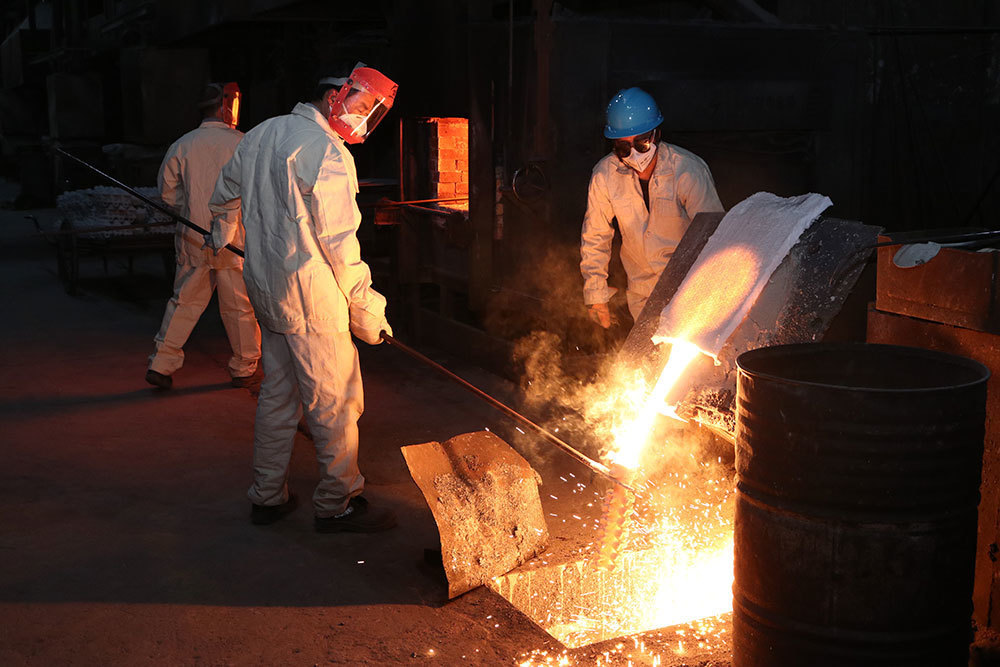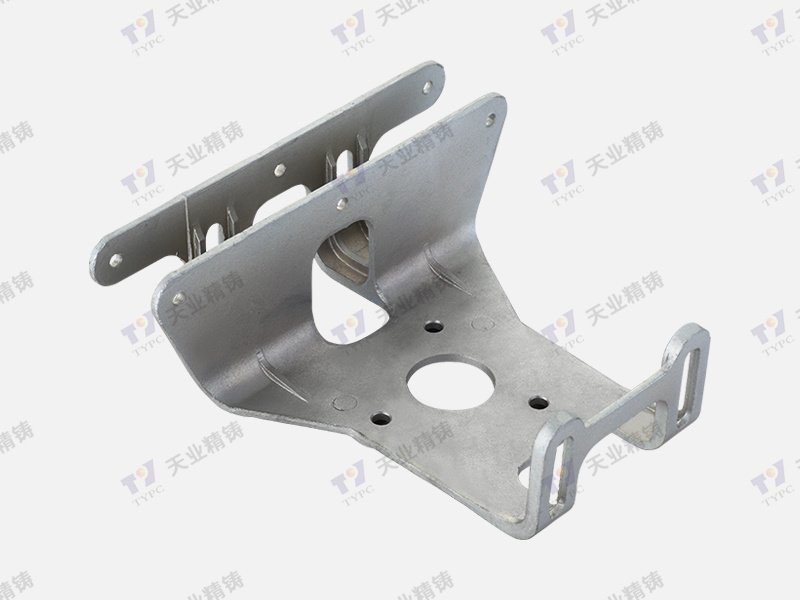2025-04-17
Unleashing the Potential: Customization Options for Transmission Fork Castings
Unleashing the Potential: Customization Options for Transmission Fork Castings
Table of Contents
- Introduction to Transmission Fork Castings
- The Importance of Customization in Industrial Applications
- Types of Customization Options for Transmission Fork Castings
- Key Materials Used in Transmission Fork Castings
- Design Considerations for Customized Fork Castings
- Manufacturing Processes for Customized Fork Castings
- Quality Control and Testing Procedures
- Case Studies: Successful Customization Solutions
- Conclusion: Maximizing Efficiency with Customized Solutions
- FAQs about Transmission Fork Castings
Introduction to Transmission Fork Castings
Transmission fork castings play a critical role in various industrial applications, providing the necessary support and functionality for gear engagement in machinery. These components, typically made from metal alloys, are designed to withstand high stress and wear while maintaining precise movements. With advancements in technology and manufacturing processes, customization of transmission fork castings has become more accessible, enabling businesses to enhance their operational efficiency and product longevity.
The Importance of Customization in Industrial Applications
Customization in the manufacturing sector allows for the creation of components that meet specific performance requirements. In the case of transmission fork castings, tailored solutions can significantly influence machinery performance, operational reliability, and even safety. Customization can address unique challenges such as:
- **Specific load requirements**: Different applications demand varying load tolerances, which can be accommodated through custom design.
- **Environmental conditions**: Castings can be tailored to resist corrosion, temperature fluctuations, or other environmental factors.
- **Operational efficiency**: Custom designs can facilitate smoother operations, reducing wear and tear and minimizing downtime.
By investing in customized transmission fork castings, companies can achieve a competitive edge, ensuring their machinery operates at optimal performance.
Types of Customization Options for Transmission Fork Castings
Various customization options are available for transmission fork castings, each designed to meet specific needs. Some common types include:
Dimensional Customization
Dimensional customization involves altering the size and shape of the casting to fit specific machinery designs. This may include adjustments in length, width, and thickness to ensure proper engagement and functionality.
Material Customization
Selecting the right material is essential for the casting's performance. Customization options may include choosing alloys with specific properties such as increased strength, corrosion resistance, or heat resistance, tailored to the application.
Weight Optimization
Optimizing the weight of a transmission fork casting can lead to improved efficiency and reduced energy consumption. This can be achieved through material selection and design adjustments that maintain structural integrity while minimizing weight.
Surface Treatments
Surface treatments, such as coatings or finishes, can enhance the durability and performance of transmission fork castings. Custom options may include hardening treatments, anti-corrosion coatings, or even aesthetic finishes for branding purposes.
Functional Additions
Customization can also involve adding features that enhance the functionality of the casting. This could include integrating sensors or other technologies that provide real-time feedback on performance.
Key Materials Used in Transmission Fork Castings
The choice of material significantly impacts the performance and durability of transmission fork castings. Here are some commonly used materials:
Alloy Steel
Alloy steel is a popular choice for transmission fork castings due to its strength and toughness. It can withstand high stress, making it ideal for heavy-duty applications.
Cast Iron
Cast iron is known for its excellent castability and wear resistance. It’s often used in less demanding applications where cost is a primary concern.
Aluminum Alloys
Aluminum alloys are favored for their lightweight properties and resistance to corrosion. They are especially suitable for applications where reducing weight is crucial.
Stainless Steel
Stainless steel offers superior corrosion resistance and is often used in applications exposed to harsh environments. Its durability makes it a reliable option for transmission fork castings.
Design Considerations for Customized Fork Castings
When designing customized transmission fork castings, several key considerations must be taken into account:
Load Requirements
Understanding the load requirements is crucial for ensuring the casting can withstand operational stresses without failure. This involves examining the maximum load, frequency of use, and potential shock loads.
Geometric Design
The geometric design should facilitate proper engagement with gears, allowing smooth operation. Utilizing CAD software can aid in designing complex geometries that optimize performance.
Manufacturing Feasibility
It’s essential to consider the manufacturing processes available and how they will impact the final product. Some designs may be challenging or costly to produce, so feasibility should be assessed early in the design process.
Regulatory Compliance
Custom castings must meet industry standards and regulations. Ensuring compliance can prevent costly revisions and delays in production.
Manufacturing Processes for Customized Fork Castings
The manufacturing process for transmission fork castings involves several steps:
Pattern Making
Creating a pattern is the first step in the casting process. This involves producing a replica of the final product, which is used to shape the mold.
Mold Making
Once the pattern is complete, a mold is created, often using sand or metal. The mold must accurately reflect the desired dimensions and features of the casting.
Melting and Pouring
The selected metal is melted and poured into the mold. This stage requires precise temperature control to ensure the material flows properly and fills the mold completely.
Curing and Finishing
After the metal cools and solidifies, the casting is removed from the mold. It may undergo additional processes such as machining, grinding, or surface treatments to meet the final specifications.
Quality Control and Testing Procedures
To ensure the reliability and performance of customized transmission fork castings, rigorous quality control and testing procedures are essential:
Dimensional Inspection
Checking the dimensions of the casting against specifications ensures accuracy and proper fit within machinery.
Material Testing
Material properties such as tensile strength, hardness, and corrosion resistance are tested to verify that they meet the required standards.
Functional Testing
Functional tests assess the performance of the casting in real-world conditions, ensuring it meets operational demands.
Non-Destructive Testing (NDT)
NDT methods, such as ultrasonic testing or X-ray inspection, are employed to identify internal flaws without damaging the component.
Case Studies: Successful Customization Solutions
Examining real-world applications of customized transmission fork castings can highlight their effectiveness:
Case Study 1: Heavy Machinery Manufacturer
A heavy machinery manufacturer faced frequent breakdowns due to inadequate fork casting performance. By customizing the design and material, they achieved a 30% increase in durability and reduced downtime by 15%.
Case Study 2: Automotive Company
An automotive company needed lightweight fork castings for improved fuel efficiency. By switching to aluminum alloys and optimizing the design, they successfully reduced weight by 25%, leading to significant fuel savings.
Conclusion: Maximizing Efficiency with Customized Solutions
Customization options for transmission fork castings present remarkable opportunities for businesses to enhance their operational efficiency, durability, and overall performance. By understanding the various customization techniques, materials, and design considerations, companies can create tailored solutions that meet their unique challenges. In an increasingly competitive market, investing in customized transmission fork castings can be a game-changer, ensuring machinery operates reliably and efficiently. Embrace the potential of customization and elevate your industrial applications to new heights.
FAQs about Transmission Fork Castings
1. What are transmission fork castings used for?
Transmission fork castings are critical components in machinery that facilitate gear engagement, supporting precise movements and enhancing operational efficiency.
2. Why is customization important for transmission fork castings?
Customization allows for the creation of components tailored to specific applications, addressing unique challenges and improving performance, durability, and safety.
3. What materials are commonly used for transmission fork castings?
Common materials include alloy steel, cast iron, aluminum alloys, and stainless steel, each chosen based on the specific requirements of the application.
4. How can I ensure the quality of customized transmission fork castings?
Implementing rigorous quality control and testing procedures, such as dimensional inspection and material testing, is essential for ensuring the reliability and performance of the castings.
5. What design considerations should be taken into account when customizing fork castings?
Key design considerations include understanding load requirements, geometric design for proper engagement, manufacturing feasibility, and compliance with regulatory standards.









